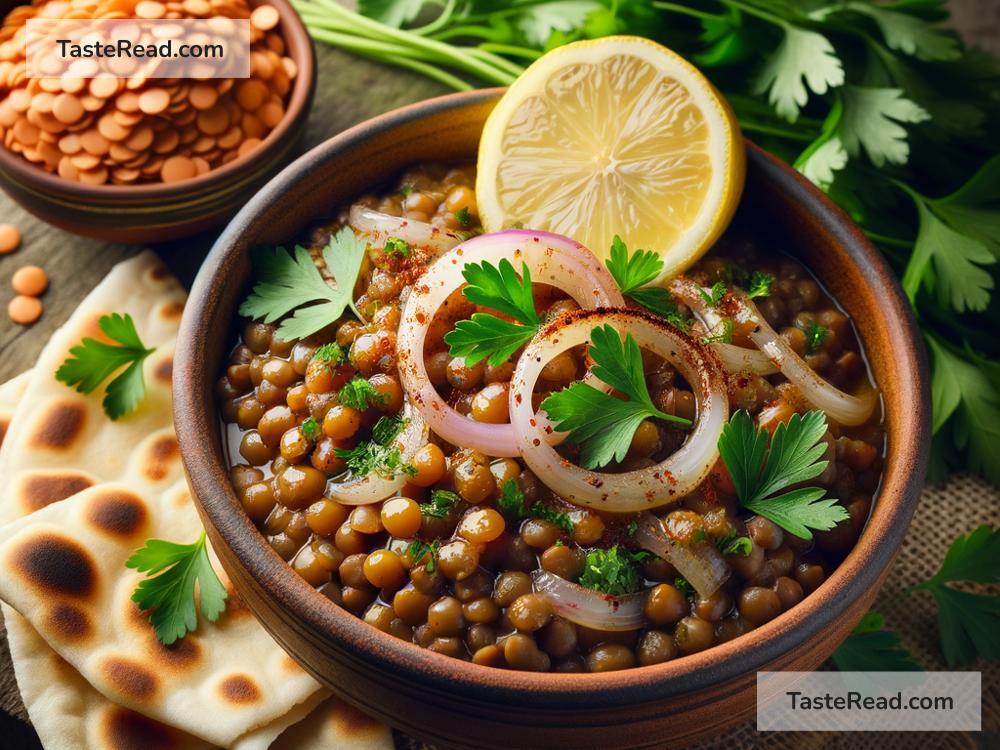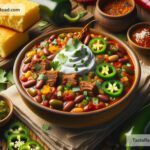Journeying Through the Spiced Layers of Lebanese Mujadara
Lebanon is a country famous for its rich history, breathtaking landscapes, and, of course, its delightful food. Among the many gems of Lebanese cuisine is a humble but incredibly satisfying dish called Mujadara. If you’ve never had it, you’re missing out on a warm, comforting plate of joy filled with earthy flavors. Mujadara’s simple ingredients come together beautifully to create a dish that tells a story of tradition, resilience, and love.
So buckle up as we journey through the spiced layers of Mujadara, learning about its significance, ingredients, preparation, and how it brings people together.
What Is Mujadara?
Mujadara (pronounced “moo-jah-dara”) is a classic Lebanese dish made with lentils, rice or bulgur (cracked wheat), and caramelized onions. Its name comes from the Arabic word “mujaddar,” which means “pockmarked,” referring to the speckled appearance of lentils scattered throughout the dish.
It’s a dish with deep roots in Lebanese culture—and Middle Eastern cuisine in general—often enjoyed as a meatless main course or as a side dish. Mujadara is loved for its simplicity; it uses everyday ingredients yet achieves extraordinary flavor. This hearty meal is perfect for vegetarians and vegans, proving that wholesome food doesn’t need fancy or expensive items to shine.
In Lebanon, Mujadara is so much more than just food. It’s a dish often served during Lent and other fasting periods when the people abstain from meat. Beyond religious tradition, it’s a favorite comfort food in many homes, reminding families of the tastes and aromas of their childhood.
The Ingredients That Make Magic
One of the most beautiful things about Mujadara is its simplicity. The star ingredients—lentils, rice (or bulgur), and onions—are easy to find and affordable. Despite their modest nature, these ingredients produce complex flavors and textures when combined skillfully.
Here’s what you’ll need to make Mujadara:
- Lentils: Brown or green lentils are usually used. They’re earthy, hearty, and packed with protein—a great substitute for meat.
- Rice or Bulgur: White rice or bulgur provides a soft, neutral base for the dish. Each option has its own character; rice is smooth and silky, while bulgur adds a slightly nuttier flavor.
- Onions: Caramelized onions are the secret weapon. They add sweetness and deep, smoky flavor to Mujadara.
- Spices: Traditional spices like cumin, cinnamon, and black pepper elevate the dish. These warm flavors give Mujadara its Middle Eastern essence.
- Olive Oil: Lebanon’s liquid gold! Olive oil adds richness while helping the caramelization process.
- Water: Yep, even simple water plays an important role—it helps the lentils and rice cook perfectly.
How to Make Mujadara
Cooking Mujadara is not complicated, but it does require a bit of patience and love. The key to the dish’s success is letting the ingredients develop their flavors naturally. Here’s a brief guide to making it:
-
Prepare the Lentils
Start by rinsing your lentils and then boiling them in water until they are tender. This takes about 15–20 minutes. Don’t overcook them—they should hold their shape. -
Cook the Rice (or Bulgur)
In a separate pot, cook your rice or bulgur. You can add a pinch of salt or spices like cinnamon to enhance the flavor. -
Caramelize the Onions
The caramelized onions are the heart of Mujadara. Slice onions thinly and sauté them in olive oil over low heat until they become golden and crispy. This process requires patience, but the result is worth it. -
Combine Everything
Once your lentils, rice, and onions are ready, combine them in a large pot. Season with spices like cumin and black pepper, and stir well. For extra flavor, some people mix a little of the onion oil into the dish. -
Serve
Mujadara is best served warm, topped with more caramelized onions. Many people enjoy it alongside a fresh salad, a dollop of yogurt, or pickled vegetables for extra brightness.
Layers of Flavor
What makes Mujadara so special is how each ingredient brings its own texture and flavor to the dish. The lentils are earthy and filling, the rice is soft and soothing, and the caramelized onions are sweet and smoky. Together, they’re perfectly balanced, with spices tying everything together into a wholesome masterpiece.
One bite of Mujadara delivers comfort, warmth, and a touch of exotic spice. It tastes like home even if you’ve never eaten it before.
A Dish That Brings People Together
Mujadara isn’t just food—it’s a cultural experience. In Lebanese homes, it’s the kind of dish that invites families to gather around the table and share stories while enjoying a simple, hearty meal. It’s also common to find Mujadara at social gatherings or served to friends who stop by unexpectedly. Its simplicity and elegance make it accessible to everyone.
Even in modern times, Mujadara represents a slower, more mindful approach to food. It reminds us that nourishing meals don’t have to be fancy. Sometimes, the simplest dishes carry the deepest meaning and the most flavor.
Try Mujadara Yourself
If you’ve never tried Mujadara, it’s time to add this dish to your cooking repertoire. It’s healthy, budget-friendly, and incredibly delicious. Plus, it’s a wonderful way to connect with Lebanese culture and celebrate the beauty of simplicity.
Next time you’re in the kitchen, grab some lentils, rice, and onions, and let the magic unfold. You’ll find yourself journeying through the spiced layers of Mujadara, savoring every bite, and feeling a deeper appreciation for the artistry of traditional Lebanese cooking.
Bon appétit—or as they say in Lebanon, “Sahtain!” (To your health!)


